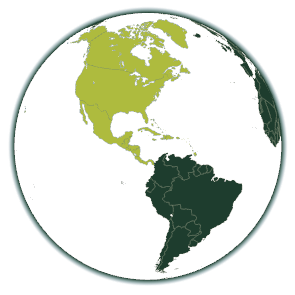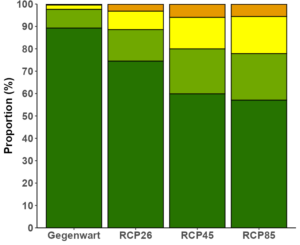Fraxinus pennsylvanica
Red Ash
Fraxinus pennsylvanica, also known as red ash or green ash, is a medium-sized to large deciduous tree that originated in North America. The tree usually reaches a height of 12-25 metres, but can also grow up to 35 metres under ideal conditions. It has a grey to brown bark that forms deep cracks and furrows with age. The leaves of the tree are imparipinnate with 5-9 lanceolate to oval leaflets. They have a dark green upper side and a lighter underside. The tree produces small, purple to green flowers that appear before the leaves shoot in spring. These develop into wing-like fruits, so-called samaras, which can reach a length of 2.5 to 5 cm. The red ash is considered a very robust and adaptable species that can thrive in a wide range of soil conditions and grows both in wet riparian forests and on dry sites.
Types of damage
Region of origin
North America

Introduction vectors
Current distribution
Based on the FlorKart Database of the Federal Agency for Nature Conservation, as of 2013
Miscellaneous
Dispersion forecast
Indicates the proportion of land suitable for habitat under current and future climate conditions (2060-2080) under three emission scenarios (RCP26, RCP45 & RCP85).

Habitat suitability under current climate conditions
These habitat suitability maps show for Fraxinus pennsylvanica where suitable habitat conditions exist.
The map on the left shows this for current climate conditions. Below this are maps for the time classes 2040-2060 and 2061-2080, in which three different emission scenarios can be selected.
The slider at the top left allows you to adjust the opacity of the map to make orientation easier.
By clicking on the respective quadrant, information on the environmental conditions present in it can be called up.
The methodology is explained here .














